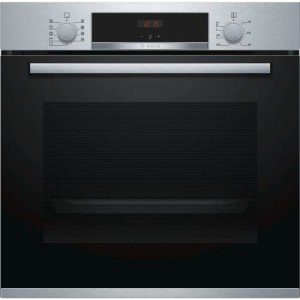The Rise of Built-In Ovens: A Seamless Approach to Modern Cooking
In modern kitchens, where design aesthetic appeals blend flawlessly with performance, one home appliance stands out as a real game changer: the built-in oven. As property owners and chefs alike continue to look for innovative solutions that boost their cooking experience, built-in ovens have become increasingly popular. This short article explores the advantages, considerations, and trends surrounding built-in ovens, highlighting why they are an important function in modern-day cooking areas.
What is a Built-In Oven?
A built-in oven is a kitchen home appliance designed to be integrated into the cabinetry of a kitchen area instead of standing alone. Unlike standard freestanding ovens, which can be moved and positioned anywhere, built-in ovens come in numerous designs and sizes to fit specifically within designated spaces. Readily available in single or double setups, these ovens offer a streamlined look that matches contemporary kitchen designs.
Advantages of Built-In Ovens
1. Space-Saving Design
Among the most enticing advantages of built-in ovens is their space-saving style. By incorporating the oven into cabinets, you can free up valuable counter and floor area. This is particularly beneficial in smaller sized kitchen areas, where making the most of room is important. Built-in ovens can be set up at eye level, making them more accessible and decreasing the need to bend down.
2. Aesthetic Appeal
Built-in ovens add to a streamlined and cohesive kitchen area design. Offered in numerous finishes-- such as stainless-steel, black, white, and custom-made kitchen cabinetry-- they can mix effortlessly into the overall decoration. This aesthetic appeal improves the cooking area's visual harmony and elevates the space, developing a contemporary and sophisticated atmosphere.
3. Enhanced Functionality
Numerous built-in ovens come equipped with sophisticated cooking technologies, such as convection cooking, steam ovens, and wise functions. These improvements enable flexible cooking choices, making it much easier to attain professional-level results in your home. Smart built-in ovens can even link to Wi-Fi, enabling users to control the oven from another location, receive notices, and access a variety of cooking programs and dishes.

4. Enhanced Ventilation
Because built-in ovens can be integrated with kitchen area hoods and ventilation systems, they can assist keep much better air quality and lower cooking smells. This is particularly considerable for those who like to cook with fragrant spices and active ingredients, as a reliable ventilation system can keep the kitchen area comfy and welcoming.
5. Customization Options
Built-in ovens use a wide variety of customization choices to fit private cooking styles and needs. From professional-grade devices with multiple cooking modes to compact designs for smaller sized kitchens, homeowners can choose the oven that fits their particular requirements. Many makers likewise provide personalized front panels, enabling you to match the oven's appearance to your cabinetry for a genuinely merged appearance.
Factors to consider When Choosing a Built-In Oven
While built-in ovens have numerous benefits, there are essential considerations to bear in mind before buying:
1. Rate
Built-in ovens usually feature a greater cost than their freestanding equivalents due to their design and setup requirements. inbuilt ovens to factor in both the expense of the oven and any extra costs connected to cabinets adjustments or setup.
2. Installation Requirements
Setting up a built-in oven frequently needs expert assistance, especially if you need to modify existing cabinetry. Ensure that you think about any costs related to installation, including labor and prospective cabinets modifications.
3. Size and Dimensions
Before acquiring a built-in oven, measure the designated space precisely to ensure a proper fit. Built-in ovens been available in numerous sizes and setups, so picking one that lines up with your requirements and kitchen area style is vital.
4. Lifestyle and Usage
Consider your cooking habits and needs when choosing a built-in oven. If you frequently host large gatherings, a double oven might be more beneficial. On the other hand, if you have a compact kitchen, a single-wall oven might be adequate.
Trends in Built-In Ovens
The kitchen device market is continually developing, and built-in ovens are not exempt from emerging patterns. Some current trends include:
Smart Technology Integration: With the increase of wise home innovation, built-in ovens now typically feature connection alternatives. This enables users to keep an eye on cooking progress and adjust settings via mobile apps.
Energy Efficiency: As sustainability ends up being a priority, many producers are purchasing energy-efficient built-in ovens that lower energy usage while keeping performance.
Multi-functional Designs: Built-in ovens now provide features such as air frying, sluggish cooking, and steaming, providing adaptability that satisfies a vast array of cooking techniques.
Conclusion
Built-in ovens certainly represent a best mix of design, function, and benefit in today's kitchen areas. As more homeowners decide for this modern-day option, the focus shifts to developing a cooking area that is as visually pleasing as it is useful. Whether you are building a brand-new home or renovating your cooking area, considering a built-in oven might raise your culinary experience and change your kitchen into a stylish and functional haven. With a selection of options readily available and ongoing innovations in technology, built-in ovens stay a standout option for both amateur cooks and culinary lovers alike.
